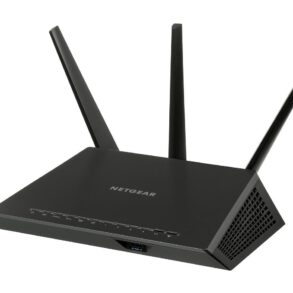Whether you want to connect Windows PCs and laptops the traditional way to share files or use Windows 7 and Windows 8’s homegroups to share photos, videos, music and documents, we have the answers here. Both file sharing methods are covered. Here’s how to share files over a network.
If you have two or more computers on a Wi-Fi or wired network at home or in the office, they can share files and folders. This enables photos, videos, documents and music stored on one computer to be accessed from another. You could store everything on the PC with the biggest disk and then access it over the network from other computers.
Connecting computers over a network to share files and folders became a lot easier with Windows 7 and 8’s homegroups, but what if you have a PC running Vista or XP? Those cannot join homegroups and you will need to resort to old-style file sharing.
In this tutorial we show how to configure Windows to share files the old way and in the second half of the tutorial we look at homegroups for Windows 7 and 8. If you have problems, turn off the PC’s firewall, get sharing working, then turn it back on. See all how to articles.
On each computer that you want to share files over the network, open the Control Panel and then open the Network and Sharing Center. We first need to make some configuration changes, so click the link on the left ‘Change advanced sharing settings’.
There are three sections labelled Private, Guest or Public and All Networks. Expand the Private section by clicking the arrow and the turn on network discovery, and file and printer sharing. Allow Windows to manage homegroup connections too. We’ll need it later.
Scroll down and Expand the All Networks section of Advanced sharing settings. Turn on sharing so anyone can read and write files. Use the same encryption for all computers, so select 128-bit if it’s not selected. Turn off password-protected sharing below.
We have been using a Windows 8 computer so far, but Windows 7 is exactly the same. To access files on the Windows 8 computer, open an Explorer and on the left in the Network section is the computer. Select it and enter a username and password.
Providing the user exists on the other computer, you are logged in and can see the user’s personal folder and the Public folder in the C:\Users folder. You cannot access any other files or folders, just the public ones and the person you logged in as.
If all the computers are Windows 7 or 8, we can make a homegroup. Open the Control Panel and then open Homegroup. If one is already running, you can use the option to leave it or show the password. There isn’t one on this computer so let’s create one.
Instead of sharing public and personal folders as we saw earlier, homegroup shares libraries or folders, printers and devices. A list is displayed and you can use the permissions column to choose which items you want to share with other people.
When a homegroup is created, Windows assigns it a password made up of random numbers and letters. Other computers need this in order to join. If a homegroup was already running in step 6, step 7 would not be necessary and you could just show the password.
Switching to the Windows 7 computer, open Homegroup in the Control Panel and it scans the network. It will automatically detect if another computer has created one and if so, it shows the details at the top. Click the Join now button to join the homegroup.
When the homegroup was created in step 8, the password was displayed. This is only available on that computer, so you’ll need to either access it yourself or ask the person using it to tell you the password. All you need to do then is to enter it and click Next.
Once you have joined a homegroup, any computer can access the shared resources on any other computer. Open an Explorer window and click Homegroup on the left to see the members. Expand a member and select a shared resource, such as Videos or Music.




